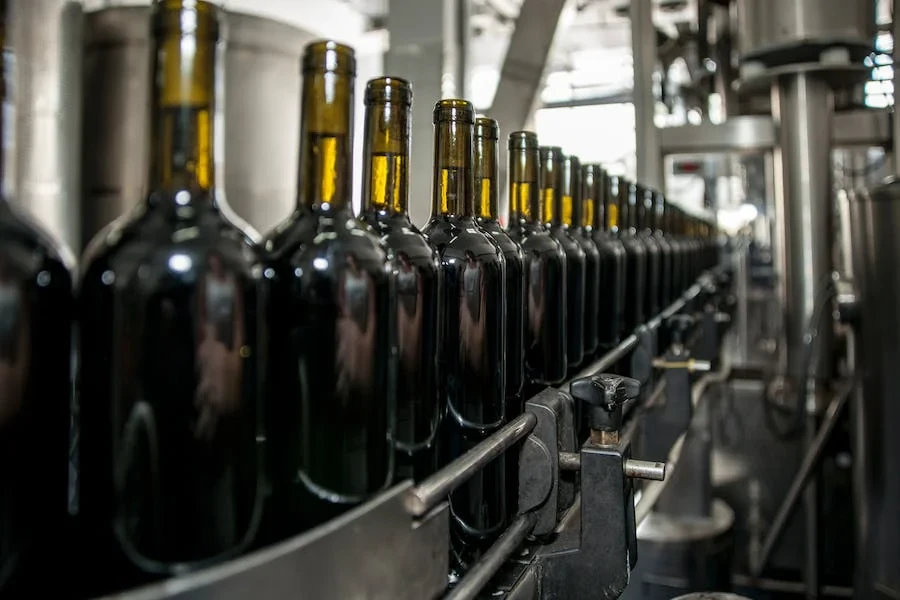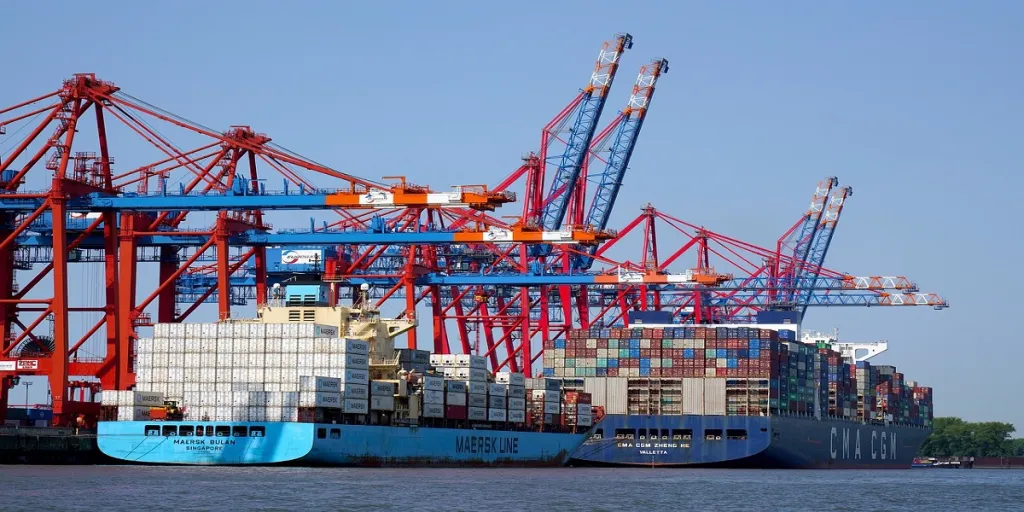Many global companies, most famously Toyota with its renowned Toyota Production System, have been using just-in-time (JIT) to improve efficiency and reduce waste. JIT refers to a management strategy that aligns the production of goods precisely with customer demand. It aims to create an ideal factory scene – every product is made just when it needs to be, resulting in zero wastage and zero surplus inventory.
However, the fragility of the JIT inventory system became apparent when the COVID-19 pandemic caused dramatic fluctuations in demand across industries, making it difficult to maintain appropriate inventory levels. In some cases, businesses were left with severe product shortages, while in others, they found themselves with an oversupply of products that were in low demand due to lockdown restrictions.
Moreover, the just-in-time model depends heavily on the reliable and swift transportation of goods. When lockdowns and workforce shortages disrupted global logistics, it caused significant delays and disruptions in the supply chain. With limited stock on hand due to the JIT approach, businesses were unable to fill the gaps with stored inventory and faced production shutdowns in some cases.
Now we are in 2024, and the question of whether JIT is still a good approach is not easy to answer. Read on as we look at the current difficulties with just-in-time inventory management and how best to handle these challenges!
Table of Contents
What are the challenges of JIT supply chains in 2024?
How businesses are adapting their JIT supply chains?
Crisis-proof supply chains are the key to business success
What are the challenges of JIT supply chains in 2024?
Working on an ‘as-needed basis’, JIT inventory systems are designed to closely sync with the manufacturing process, while keeping inventories as close to zero as possible. However, this tight alignment can sometimes prove challenging. Let’s take a look at some of the most significant challenges facing just-in-time supply chains.
Unpredictable consumer demand

The first challenge of JIT systems is the volatile nature of customer behavior. According to a survey by Accenture involving 1,700 global C-suite leaders, a staggering 95% of executives from both B2C and B2B sectors perceive that their customers’ needs and expectations are evolving more quickly than their companies can adapt.
This rapid alteration in consumer behavior is hardly startling in today’s world, given that consumers are comprehensively connected via social media platforms. They are perpetually exposed to a myriad of new products, trends, and ideologies, which propels their appetite for novelty and transformative products.
For instance, the latest iPhone model becomes obsolete the moment speculations arise about a new version’s launch. Similarly, the prevailing fashion trend can lose its appeal within just a few weeks.
The Just-in-Time (JIT) inventory system is intended for consistent, scheduled operations and doesn’t maintain additional stocks as a contingency to counter sudden shifts in demand. Consequently, if a product experiences an unforeseen surge in demand, companies may find it challenging to meet orders promptly, causing delayed deliveries and potentially missed sales opportunities.
Cost fluctuations

Since JIT relies on procuring materials exactly when needed in the manufacturing process, it becomes heavily susceptible to variations in supplier prices. A Boston Consulting Group (BCG) study reveals that raw materials often face market volatility due to supply disruptions, high demand, or significant price changes. This can impact production costs unpredictably.
Businesses using just-in-time (JIT) inventory systems may experience a sudden increase in operational expenses when raw material prices surge, as they lack a stock buffer to cushion against these fluctuations.
For example, a fashionable brand depending on cotton for their t-shirt line operates with a JIT system and orders cotton to save on storage costs. Unfortunately, severe weather affects global cotton supplies, causing prices to skyrocket.
Without pre-purchased cotton, the brand’s cost of goods sold (COGS) rises, hurting its profit margins. They face the dilemma of either passing the costs to customers or damaging their profits.
Raw material shortages
In addition to the pressure caused by rising prices, the need for raw materials is set to become two times greater by the year 2050. However, these materials are becoming increasingly harder to get. This is particularly true for lithium, cobalt, nickel, and rare earth elements.
Think about technology companies like Apple, which use rare earth elements to make their products. In the JIT system, these elements should arrive at factories just when they’re due to be added to the products.
But if something unexpected occurs, like a political issue or a natural disaster, and disrupts the supply of these elements, what happens then? The production of iPhones wouldn’t just slow down – it could stop completely if key parts are missing.
Overdependence on automation
Automation is the backbone of lean manufacturing as it increases productivity and reduces operational costs. However, when a JIT supply chain heavily depends on automation, technical glitches can disrupt the operations and cause major delays.
For instance, a relatively small issue in an automated assembly line can stop production.
Furthermore, automation is rigid when dealing with sudden changes, such as an unexpected surge in orders, a shortage of materials, or an equipment failure.
Consider a food processing facility that uses automated machines for packaging and shipping. If there is a sudden change in packaging regulations or new labeling requirements arise, such as for allergens, it can create problems. In this situation, the machines need to be reprogrammed to include new information or adapt to different packaging, which can be both challenging and time-consuming.
How businesses are adapting their JIT supply chains?
After understanding the challenges of having a zero inventory system, let’s explore how various businesses are adjusting and strengthening their JIT supply chains to become more resilient.
Switching to Just-In-Case (JIC)
Many companies are turning to the just-in-case (JIC) inventory approach. JIC is a safety net. It involves keeping extra stock ready to counter unexpected scenarios, like sudden surges in orders or hiccups in the supply chain.
Even though this strategy may lead to increased inventory costs, the benefits of the JIC method often outweigh its costs:
- Customer satisfaction: Keeping a sufficient inventory means a company can always meet its customers’ needs promptly. It avoids running out of stock and ensures timely delivery of orders, leading to satisfied and loyal customers.
- Price stability: Holding surplus inventory protects businesses from short-term market price swings. They can buy and hold stock when prices are low, which helps maintain stability in costs.
- Market adaptability: Having surplus inventory enables businesses to adapt to market changes quickly. Whether it’s a demand surge or a disruption in supply, companies can use their extra stock to smooth over these bumps, demonstrating adaptability and resilience.
Diversification of suppliers

Building a diversified supplier base is another strategy that businesses can use to make their JIT supply chains more resilient. In a JIT framework, any disruption from a single supplier can stop the entire production process, particularly where timing is crucial.
A great example of such mitigation in action is Toyota’s response to the 2011 earthquake and tsunami in Japan. Having learned from a previous crisis in 1997, Toyota developed a diversified supplier strategy, which enabled it to keep production going in the face of significant supply disruptions.
Creating a diverse network of primary and backup suppliers is beneficial and can be classified as follows:
1. Geography-based suppliers:
- Local suppliers: These are close by, leading to shorter delivery times. If issues occur, they can be sorted out quickly due to the nearness and improved communication.
- Global suppliers: These offer alternative supply options if local chains are disrupted. They can also give more competitive rates, due to lower production costs in their regions.
2. Lead time-based suppliers:
- Short lead time suppliers: These are key during emergencies as they enable quick responses to unexpected demand or other supply interruptions.
- Long lead time suppliers: These usually offer more affordable rates and are suitable for consistently demanded products.
Increased localization
Just-in-time supply chains relying on international suppliers can be susceptible to risks such as trade restrictions, changes in currency value, political instability, and even natural catastrophes.
To fight these challenges, localizing production can be helpful by sourcing materials mostly from suppliers located in the same country or region. Here are some advantages of utilizing local assembly units:
- Faster lead times: Local suppliers can hasten the acquisition process, resulting in businesses being more apt to fulfill customer needs.
- Decreased transport expenses: Having sources closeby lowers transportation costs since components can arrive at production facilities without traveling far.
- More efficient production: The closeness of suppliers to the production sites helps businesses streamline their production lines, coordinating JIT deliveries with production timetables.
Looking back at 2018, a growing trade war between the U.S. and China negatively affected many industries including the bicycle manufacturing sector. The U.S. imported a lot of bicycles from China, which underwent a hefty 25% tariff. As a result, a U.S.-based bicycle manufacturer, Huffy, saw their costs increase by millions and had to raise prices, resulting in decreased sales.
On the other hand, Canyon Bicycles, which assembles its bicycles in Germany, was less affected. Although they sourced parts worldwide, having an assembly location closer to their main European markets helped mitigate the effects of tariff disruptions. This helped keep their costs and pricing relatively steady.
In-house manufacturing

“Why purchase a loaf when you can bake your own?” Making raw materials in-house, instead of outsourcing them, has become a strong strategy to make JIT supply chains that rely heavily on timing much more resilient.
In-house production of raw materials can lead to cost savings by eliminating the need for markups and transport fees charged by third-party suppliers. Moreover, producing raw materials in-house allows businesses to control the quality of their inputs more closely, ensuring consistent standards and reducing the risk of defective products.
While in-house manufacturing offers considerable benefits, it’s important to understand that it might not be practical, achievable, or cost-effective for all parts of a product. Therefore, it’s important that businesses prioritize the production of key components that can be manufactured internally without the need for substantial investments or drastic changes to the current production setup.
Take, for example, a chocolate manufacturer that relies on a supplier for its raw cocoa nibs, the core ingredient in chocolate production. The company could purchase raw cocoa beans and roast them in-house to create their cocoa nibs.
Minimal investment in a roaster and basic processing equipment would allow them to have better control over the quality, flavor profile, and consistency of the cocoa nibs. Consequently, this not only enhances their chocolate products but also ensures reliable and constant availability of the crucial ingredient whenever needed.
Crisis-proof supply chains are the key to business success
In summary, recent global disruptions have challenged the once-praised just-in-time supply chains. These challenges spotlight the urgent need to crisis-proof supply chains in today’s unpredictable business landscape.
Irrespective of the management strategy adopted, building resilient supply chains—through measures like supplier diversification, increased inventory buffers, and advanced predictive analytics—is not just a choice but a crucial requirement for survival. Explore other inventory management techniques and equip your business with the right tools to handle future uncertainties!

Looking for a logistics solution with competitive pricing, full visibility, and readily accessible customer support? Check out the Alibaba.com Logistics Marketplace today.








